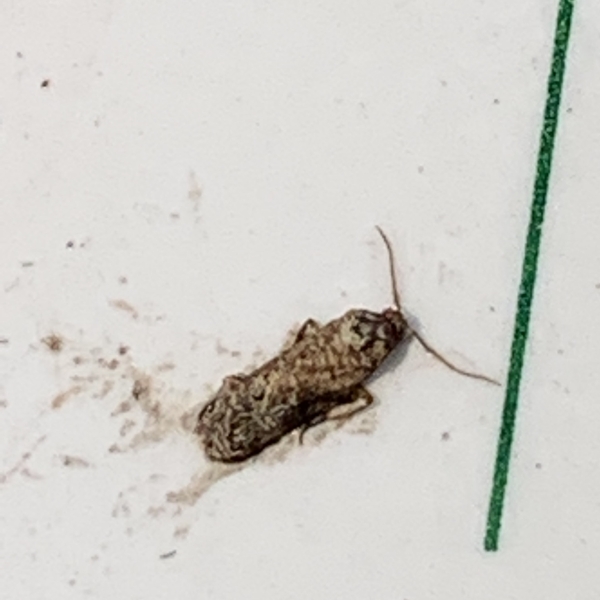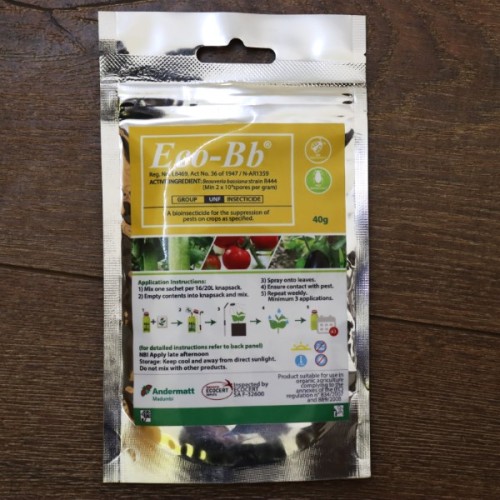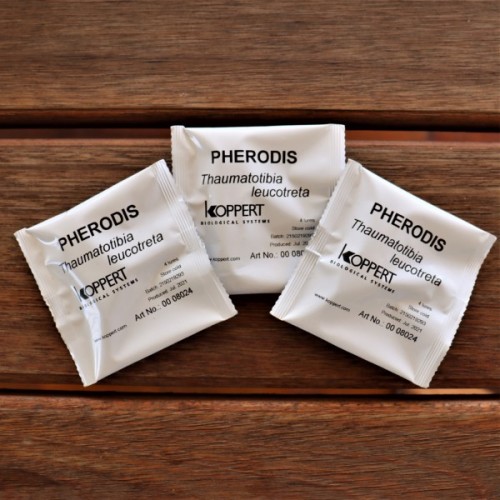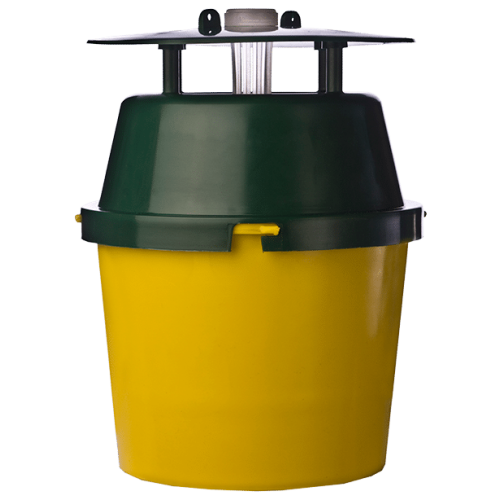False Codling Moth

Thaumatotibia leucotreta
False Codling Moth, Thaumatotibia leucotreta, is a notorious fruit pest in South Africa, particularly problematic in citrus, pomegranate, stone fruit, and peppers. The moth’s tiny eggs hatch into larvae that tunnel directly into fruit. These internal feeders compromise fruit quality and can lead to total crop loss. With multiple generations per year and a preference for warm conditions, infestations can quickly spiral without early detection and strategic control.
Because the larvae remain hidden inside the fruit, chemical sprays are often ineffective once feeding begins. A preventative, layered strategy is essential. Monitoring moth activity with traps and applying biological products at the right time gives the best chance of protection. Waiting for visible signs often results in undetected crop damage and missed control windows. An Integrated Pest Management (IPM) approach that uses pheromone traps alongside fungal biocontrols offers long-term, residue-free suppression.
Culturally, sanitation is critical. Remove and destroy dropped or damaged fruit to reduce overwintering sites. Begin monitoring with pheromone traps as trees come into flowering and maintain high trap density during fruiting stages. At the first sign of adult moth detection, apply biological sprays such as Eco-Bb to target larvae before they enter the fruit. Regular reapplication, aligned with moth activity, is the most effective preventative method.
-
Traps/Monitoring
-
False Codling Moth : Trap System
A delta-style trap system including sticky liners and a pheromone lure. Use one trap per tree. Replace lures every 4 to 5 weeks to maintain effectiveness. -
False Codling Moth Pheromone Lure (4 Pack)
Replacement lures for use in delta or funnel traps. Attracts males and assists with mating disruption. -
Delta Trap : Trap Only
Lightweight and effective trap that holds sticky liners and pheromone lures for easy monitoring. -
Funnel Trap : Trap Only
A sturdy trap suited to larger orchards or areas with high pest pressure. Works with lures for extended monitoring.
-
-
Biologicals
-
Eco-Bb® (Beauveria bassiana)
A fungal biocontrol agent that infects and kills false codling moth larvae. Apply as a preventative spray and repeat every 7 to 14 days during peak moth activity.
-
Andermatt - Eco-Bb (Ecobuzz Pest Pro)
Eco-Bb, previously known as Pest Pro is a fungal bio-insecticide (Beauveria bassiana) that attacks ..
R133.40
Delta Trap : Trap Only
These cost-effective, readily assembled traps are easy to use enabling fast implementation for a q..
R167.49
False Codling Moth : Trap System
Delta Trap + 2 x Sticky Liners + FCM Pheromone lure False Codling Moths are a major pest of ..
R247.53
False Codling Moth Pheromone Lure
Pheromone base lure that attracts the males effectively removing them from the breeding population.S..
R300.10
Funnel Trap : Trap Only
This is the most advanced Bucket Funnel Trap® in the global market. Lures available separatelyWork..
R182.31




